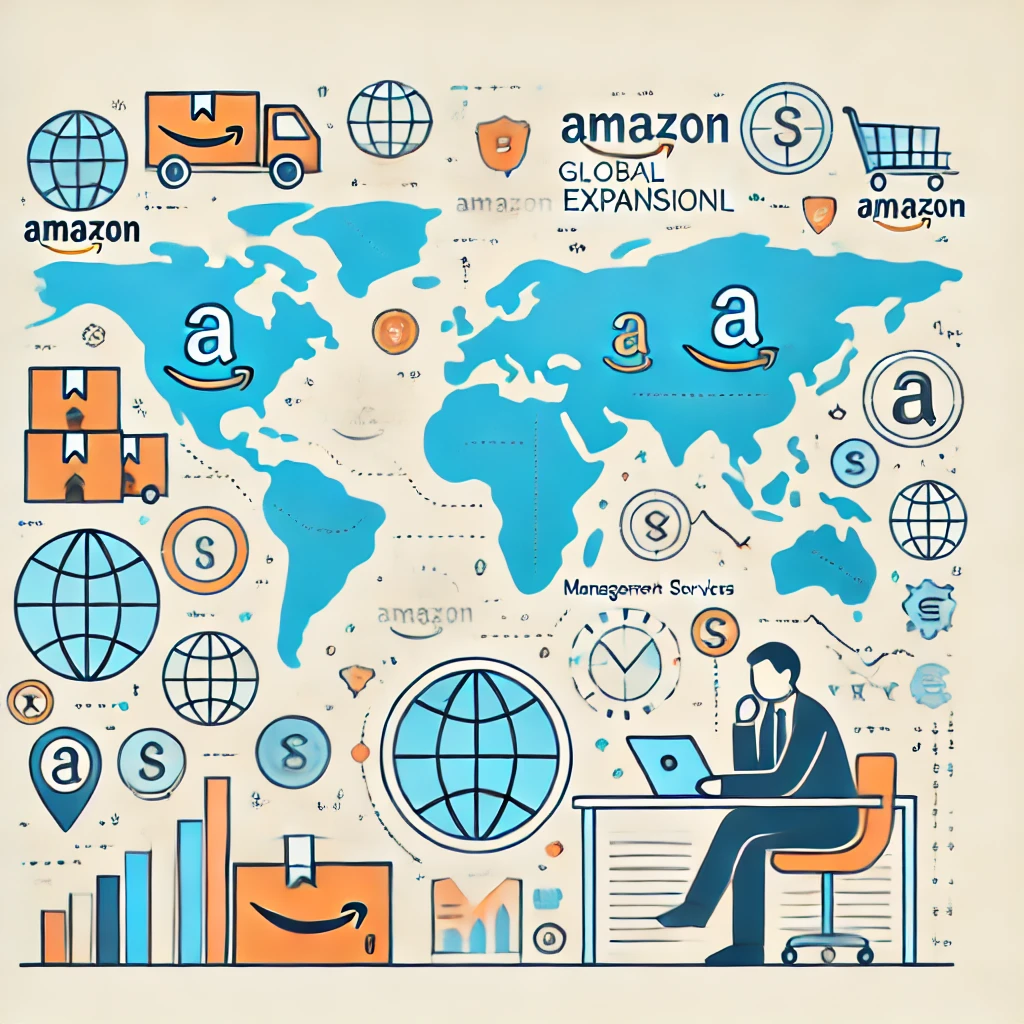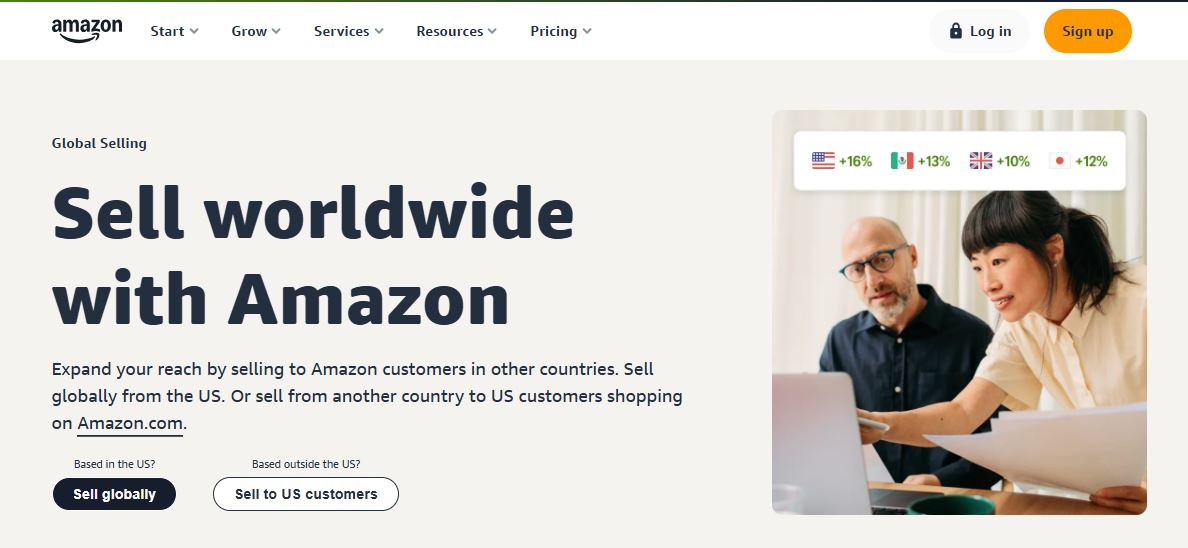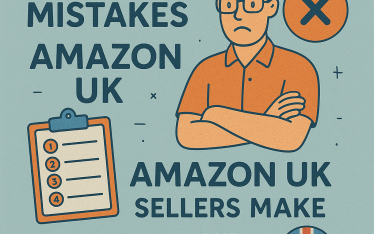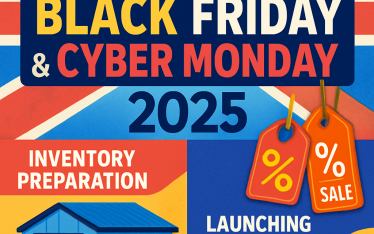TL;DR
- Over 200 million people shop across Amazon’s 20+ global marketplaces, offering huge potential for international growth.
- Expanding globally can boost sales and brand visibility but comes with challenges like tax rules, logistics, translations, and compliance.
- Key steps include selecting the right countries, checking demand, setting up a global account, translating listings, and learning local tax laws.
- Amazon FBA simplifies international shipping, storage, and customer service, making it easier to sell across borders.
- Advertising in each marketplace and tracking performance regularly is essential for long-term success.
Over 200 million people shop on Amazon across 20+ global marketplaces, making it one of the easiest ways to take your business internationally. More than 60% of Amazon sellers already sell in multiple countries and those who do often see higher growth and better brand visibility.
But expanding globally isn’t as simple as turning on a new marketplace. From tax laws and logistics to language barriers and listing optimization, going international comes with its own set of challenges. That’s where Amazon management services can make a big difference.
In this blog, we’ll break down how it works and how management services help to navigate each step of global expansion, choosing the right countries, setting up compliant listings, managing shipping, and launching ads in new markets. Whether you’re testing the waters or ready to scale fast, having a team that understands Amazon’s global selling system can save time, avoid costly mistakes, and boost your chances of success.
Why is expanding globally on Amazon a big opportunity?
Expanding globally on Amazon is a huge opportunity for sellers looking to grow their business beyond local borders. With over 300 million active customer accounts worldwide and 20+ international marketplaces including the UK, Germany, Japan, Australia, and Canada Amazon gives you access to a massive global audience without needing to build a separate website or team in each country.
Selling internationally on Amazon allows you to tap into markets where demand for your product might be even higher than at home. You can boost sales, reach new customer segments, and build brand recognition across different regions. Plus, with Amazon’s Global Selling program, Fulfillment by Amazon (FBA), and cross-border logistics support, you don’t need to manage complex shipping or warehousing alone.
Another advantage is seasonal sales balancing. When one market slows down, another might be peaking, helping you maintain steady revenue year-round. Currency conversions, language translation tools, and local customer service options make it easier than ever to operate globally.
Of course, going international comes with its challenges, but the potential rewards are significant. With the right strategy and support from Amazon management experts, global selling can be a smart, scalable way to grow your brand and boost your profits.
Challenges sellers face when going international
- Understanding local regulation
Each country has different tax laws, import duties, and product compliance rules. Ignoring these can result in customs delays, fines, or even account suspension. You must ensure they stay up to date with legal requirements in every market they enter. - Language and cultural barriers
Language and cultural barriers can also be a major hurdle. Direct translations often miss the mark, and failing to localize listings or marketing can lead to confusion, low engagement, and lost trust. - Shipping and logistics
Shipping and logistics are more complex at a global scale. Choosing between FBA and self-fulfillment, handling international returns, and managing delivery times requires careful planning and cost control. - Longer delivery times
Longer delivery times are a common issue in international selling and can lead to frustrated customers, poor reviews, and reduced repeat purchases. To manage this, it’s important to communicate estimated delivery windows at checkout, provide reliable tracking information, and update customers proactively if there are any delays or issues. - Marketplace-specific ad strategies
Advertising strategies that perform well in one country may not translate effectively to another due to differences in shopping habits, language, and cultural preferences. Without local insights, your ads may miss the mark leading to poor engagement, wasted budget, and low visibility. Tailoring campaigns to each market is key to success. - Listing optimization for each region:
Each Amazon marketplace has its customer search behavior, so simply copying listings across regions won’t work. To stay relevant, sellers must update product titles, Amazon product keywords, and descriptions based on local search trends and language preferences. This improves visibility, boosts rankings, and ensures your product appeals to regional customers.
- Customer service expectations
International customers expect quick responses and support in their local language. Delayed replies or poor communication can lead to negative reviews, low customer satisfaction, and reduced ratings. Amazon tracks these performance metrics closely, so failing to meet expectations can hurt your account health and limit future selling opportunities. - Managing multiple accounts or settings
Managing multiple Amazon marketplaces means dealing with separate dashboards, reporting systems, and settings for each region. This can quickly become confusing and time-consuming. Without the right tools or expert support, you may struggle to stay organized, monitor performance accurately, or maintain consistent branding and operations across all international markets.
How to get started with global selling?
Getting started with global selling on Amazon can open the doors to huge growth for your business, but success depends on taking the right steps from the beginning. Here’s a step-by-step guide to help you expand internationally with confidence:
- Pick the countries you want to sell in
Begin by selecting the marketplaces where your product is most likely to succeed. Amazon operates in over 20 countries, including the US, UK, Germany, Japan, Canada, and Australia. Consider factors like language, demand, competition, and shipping logistics. Not every market will suit every product, so choose wisely.
- Check if people are buying your product there
Before listing, conduct thorough market research. Use tools like Amazon’s Product Opportunity Explorer or third-party tools like Jungle Scout or Helium 10 to analyze demand, competition, and pricing in your target countries. If customers are already searching for and buying similar products, that’s a good sign you can succeed there too.
- Set up your Amazon global account
If you’re already selling on Amazon in one region (like the US), you can expand using the same Seller Central account by enabling additional marketplaces. Amazon’s Global Selling program allows you to manage multiple regions under one account. Just make sure you select the right regions and link your marketplaces through the unified account dashboard.
- Translate your listings for each country
Don’t rely on Google Translate. Poor translations can hurt your brand and confuse buyers. Use native speakers or professional Amazon translation services to localize your product titles, bullet points, and descriptions. Make sure your keywords match the local search behavior in each marketplace for better visibility.
- Set up FBA or shipping options
Decide how you want to fulfill orders either through Fulfillment by Amazon (FBA) or self-fulfillment. FBA is often the best choice for global selling because Amazon handles storage, delivery, and customer service on behalf of sellers. For FBA, you’ll need to ship your products to Amazon’s local fulfillment centers in each country. If you choose to fulfill orders yourself, make sure you understand international shipping costs, delivery times, and return logistics.
- Learn the tax and import rules
Each country has its tax, customs, and import laws. You may need to register for VAT (Value Added Tax) or GST in certain regions, and ensure your products are properly labeled and classified. Working with a tax advisor or Amazon’s Service Provider Network can help you stay compliant and avoid costly mistakes.
- Start ads to get more views
Once your listings are live, promote them using Amazon’s advertising tools. Amazon Sponsored Products and Sponsored Brands can help boost visibility and drive traffic in new markets. Tailor your campaigns for each region what works in one marketplace might not work in another.
- Watch results and improve as you go
Track your sales, ad performance, and customer feedback regularly. Use this data to tweak your pricing, ads, and listings. International selling is a learning curve, but with consistent effort and the right support, you’ll be able to grow steadily.
Expanding globally takes planning, but Amazon management services can make the process much smoother by handling setup, compliance, and optimization so you can focus on growing your brand worldwide.
Ready to make global selling simple?
Expanding globally on Amazon is a powerful way to grow your brand, reach new customers, and increase sales. With access to over 20 international marketplaces and millions of shoppers worldwide, Amazon makes it easier than ever to sell across borders. But global selling isn’t just about listing your product in a new country; it involves careful planning, local research, and ongoing management to succeed.
If you want help, our Amazon consultants specialize in global expansion. We guide you through every step from choosing the right markets to optimizing your listings and managing compliance. Whether you’re just getting started or ready to scale, we make the process smooth and hassle-free.
Reach out to our team today and start your journey to global growth.







